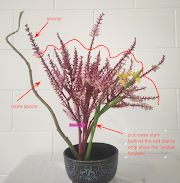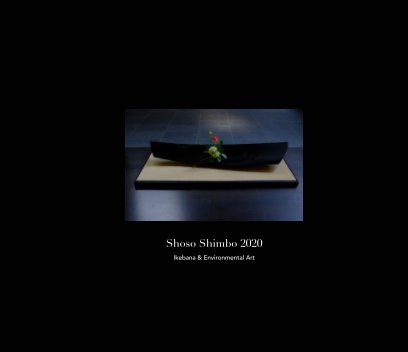Level 1.2: Movement - Task (29 January 2022)
Topic: Movement 1
Ikebana Aesthetics Program - Zoom Ikebana Dojo
⬦⬦⬦⬦⬦⬦⬦⬦⬦⬦⬦⬦⬦⬦⬦⬦⬦⬦⬦⬦⬦⬦⬦⬦⬦
Video Tutorial: https://youtu.be/Hjg94c_wjk4. Please follow our site by Email or subscribe our Youtube Channel.
⬦⬦⬦⬦⬦⬦⬦⬦⬦⬦⬦⬦⬦⬦⬦⬦⬦⬦⬦⬦⬦⬦⬦⬦⬦
Movement is the way the elements such as shape or colour are organised to lead the eye to the focal area. Expressing movement in ikebana is very important.
Movement in ikebana has several meanings, so we need to divide the topic of movement into three stages, Movement 1, 2 & 3. The first step in Movement 1 is to understand how S shape lines are used in the classic Seika style. In essence, the S shape line represents movement of life energy. Please google "Seika, Ikebana" to see some images. In the following diagram you can easily identify 3 S shape lines.
In Movement 1, we focus on incorporating an S shape line in your work. In Movement 2 & 3, we focus on more technical aspects and a bit more complicated designs.
Task
Your task this time is to incorporate one S shape line in your work. It's so simple but notice how a single stem or vine with movement makes your work really energetic! Your arrangement is dancing! If you are an advanced student, incorporate more than 2 S shape lines in your work.
What You Need
1. secateurs
2. kenzan or florist foam or wire packed container (see a photo below)
3. container - any include a cup. Find a container that suits your materials, in particular, the leaves in this task.
4. flower materials:
a. An S shape line material: vine or any other plants. You may have to look for it, but you can also learn to manipulate plants to create the S shape line.
b. A few leaves such Kale, Caladium, or any other plants.
c. Daffodil or any other flower.
Flower materials are guide only. You can choose any other materials as long as you focus on the topic .
How to Make It?
1. Measure the length of the container (height + diameter). If your container's height is 5cm and diameter is 10cm, the length of your container is 15cm.
2. Prepare the longest leaf - about the length of the container. In our example, the longest leaf should be about 15 cm.
3. Prepare the 2nd and the 3rd leaves - about the same length as the first one.
4. Fix the 3 leaves. Attach the three leaves at one point on the kenzan or whatever you are using to fix your materials.
5. Attach the S shape line at the same point. Create an impression that all materials are growing from the same point. See the photo above (blue arrows).
6. Make sure that the S shape line is not touching the edge of the container. This is important to emphasize the movement. See the photo above (red S shape line).
7. Add flowers among the leaves. If your flower stem is too skinny for kenzan, attach a piece of thicker stem from another plant.
What's Next? - Get Feedback.
1. Take a photo of your work.
2. Book to join Zoom Ikebana Dojo. Use an application form on the page. That is the first step. Follow the instruction on the page.
3. Join Zoom Ikebana Dojo on 4 July 2020. Send your photo to our facilitator. Enjoy friendly feedback from our facilitator and other participants.
Samples for Advanced Students
References





























